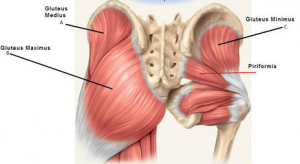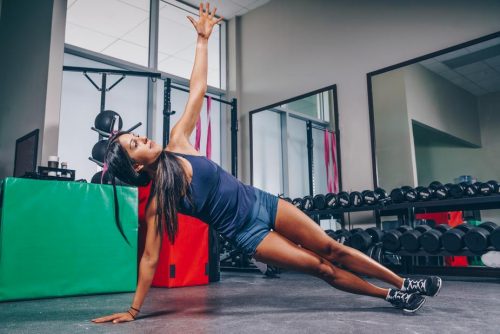Have you ever wondered why you need to strengthen your hip muscles? Hips were the forgotten link for a long time, but now we put a lot of focus on the hips. What’s all the hype about hip strengthening, anyway???
Many common injuries throughout the body have been associated with a strength deficit (weakness) at the hips. You may know someone who has experienced knee pain, IT band syndrome, back pain, shin splints, plantarfasciitis, or other aches/pains/syndromes through the leg. In most of these cases, the individual demonstrates weakness of the hip muscles upon assessment.
The hip muscles support the pelvis and core in order to form a strong foundation for the legs and arms to move from. If these muscles are not doing their job properly, the strong foundation does not exist, and therefore the body has to compensate to adjust for the deficit. Over time, compensations may lead to overuse or repetitive stress injuries, locally or further along the kinetic chain.
The specific hip muscles that we are most concerned with when considering strength deficits, are the gluteus medius and deep hip rotator muscles. These muscles function to abduct the leg (move the leg away from midline), rotate the leg inward or outward, and stabilize the hip joint. Similar to the rotator cuff in the shoulder, these muscles provide support to the hip joint.

Functionally, the deep hip muscles have a very important role, which is to provide stability to the leg when walking, running, or performing a task that requires having only one foot in contact with the ground. The hip muscles help to maintain alignment through the lower extremity, keeping the knee in-line with the foot and hip, and the pelvis and spine level. When the hip muscles are weak or insufficient, the knee will move out of alignment, usually inward in a “valgus” direction, taking the foot and ankle inward with it, and placing extra stress on ligaments, muscles, and joints. Note the ripple effect of hip weakness in the image below – adjacent joints above and below are forced to rotate and move out of alignment, creating dysfunctional mechanics.
If dysfunctional mechanics continue, an injury will very likely occur. The knee, being the neighboring joint to the hip, endures the greatest increase in stress. Meniscus tears, ligament injuries (including ACL and MCL), chondromalacia, and osteoarthritis are common results.

Another function of the hip is to transfer power through the body during sports and activities. Energy will be lost between the upper and lower body if the core and hip muscles are not sufficiently able to transfer force.
Abdominal and hip muscles work very closely together; and it would be impossible to adequately strengthen the “core” without strengthening the hip muscles. In addition to transferring energy and power, a strong core is extremely important for protecting the lower back as well as the knees, ankles, and feet, if you plan to live an active lifestyle.
Now you see why hip strengthening is so important! If you are an athlete, or if you coach, train, or parent athletes, keep in mind that strength training programs should include exercises targeting the hip muscles with emphasis on sport-specific movement patterns to be most effective for performance and injury prevention.



